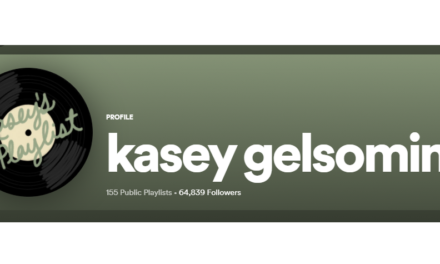Content consumption and distribution patterns have changed radically in recent years. The rapid digitization of media, and evolution of consumer viewing habits have upended the media value chain. As everyday life has become more mobile, so too has our media. Consumers want content when and where it suits them – on their laptops, smartphones, and other connected devices. In light of this sea change, brands are scrambling to adjust their marketing strategies, budgets, and workflows to compete for attention. Effectively and efficiently creating and distributing digital marketing assets brings enormous challenges. But with challenge comes opportunity. Consumers worldwide have an insatiable appetite for content, but it must be created, executed, and distributed correctly.
To meet today’s marketing needs, brands are re-thinking staffing and departments. Companies are recruiting marketers savvy in digital content creation, distribution, and monetization, while beefing up creative staffs. The digital marketing landscape is no longer foreign to forward-looking brands. But executing high-volume, fast-turnaround, video content requires a different distribution infrastructure.
Legacy models based on print and television aren’t designed for today’s wide-ranging, time-sensitive digital marketing opportunities. The shift in media dollars from traditional platforms to online advertising is increasing the volume of video production, which requires numerous formats and deliverables coming out of post production. The ability to scale becomes paramount. And for international brands, content across regions becomes even more complex and fraught with challenges.
Efficiently creating compelling content to support broadcast and digital marketing campaigns with cohesive and consistent messages across multiple channels is the new name of the game. A holistic approach to this process, backed by the appropriate expertise, systems and technology is the way to get there. While still in its infancy for even the largest brands, there’s one industry that’s been at this for a while and has paved the way: Hollywood.
Adopting the Hollywood Model
Brands are increasingly looking to the model used by Hollywood film studios. Digital marketing techniques are fundamental to building awareness of new film releases. They are part and parcel of any film marketing campaign today. They work to create a groundswell of excitement, build word-of-mouth awareness, drive ticket sales, and even help raise the level of critical discourse within the film community.
But the delivery of digital marketing assets to support film releases is complex. The abundance of digital platforms on which content is consumed, along with country-specific regulations, and the need to keep assets secure from piracy all put enormous strain on the content creation and distribution process. Studios and production companies are finding that localizing and delivering content globally, from one centralized location, offers efficiency, as well as branding consistency, to promotional activity around the world.
Companies that specialize in producing content for Hollywood have the infrastructure and resources in place to scale, as they often work on multiple major releases simultaneously. In-house asset management and distribution platforms are designed and optimized specifically for fast-turnaround, high-quality, and localized content. Video and digital production experts, customer service coordinators, technical and graphics specialists, audio mixers and quality control operators must have the tools to work together seamlessly. A single platform can ensure that a multinational client base receives the highest quality content and service in a time-sensitive window of marketing opportunity.
Meanwhile the majority of brands still approach digital marketing much the same way as traditional campaigns, through regional offices and separate agencies, which is a costly model that can be disjointed, and often doesn’t reflect a unified brand message.
Speaking the Right Language
Whether a global brand is distributing assets for a broad digital strategy, or a film studio is promoting a new release, the content challenge is much more complex than simple language translation. What resonates in Barcelona might not in Brisbane or Boston. There are linguistic and cultural nuances that must be addressed. Study after study has shown the importance of authenticity to viewers when consuming all types of content. No matter how inspired the content, if it doesn’t strike the right chord with its intended audience, then it will quickly be forgotten. Versioning to produce regionally relevant and resonant material is critical to successful branding and promotional efforts.
There are also technical considerations. We’re seeing more and more direct integrations into video platforms—from social media to pre-roll ads and on-demand TV systems. Most platforms demand that advertisers deliver not only a TV spot, but also tailor creative for the smaller screen or to the platform’s specific requirements. These creative and technical parameters require a strategic approach and high-quality, targeted content that’s carefully and thoughtfully executed.
Brands as Storytellers
Increasingly brands are looking to do what films and other long-form video content can do – create an emotional response. To build brand loyalty, you need to make an emotional connection. Doing so in today’s digital media landscape means using more sophisticated methods as audiences have the power to avoid or ignore unwanted marketing material with a swift stroke of a key.
The ultimate goal is to bring audiences in. Consider Old Navy’s campaign with SNL comedian Amy Poehler. The company used Amy’s appearance in its TV commercials to create videos of Poehler’s humorous outtakes, which were posted to YouTube. This “voluntary” online content garnered more viewership than the “involuntary” TV ads and Old Navy succeeded in creating Hollywood-level content that audiences sought out on their own for its entertainment value.
More and more brands are looking to connect with viewers though emotional appeals and cinematic production values across multiple platforms – like Coca-Cola tying their brand to “happiness,” Virgin Atlantic embodying “empathy,” and Apple identifying with “individual empowerment.”
To do so brands like Nike have commissioned animated shorts. Häagen-Dazs and fashion house Miu Miu have created documentaries while BMW, Estrella, and H&M are going all out with cinematic fiction.
There’s sure to be more experimentation and content permutations. The landscape evolves at lightning speed, which is why brands need to be nimble and able to meet changing market conditions and deliver high-quality, fast-turnaround content efficiently and cost effectively. If Hollywood can do it, so can the world’s brands.






